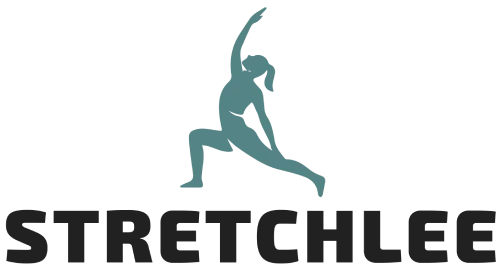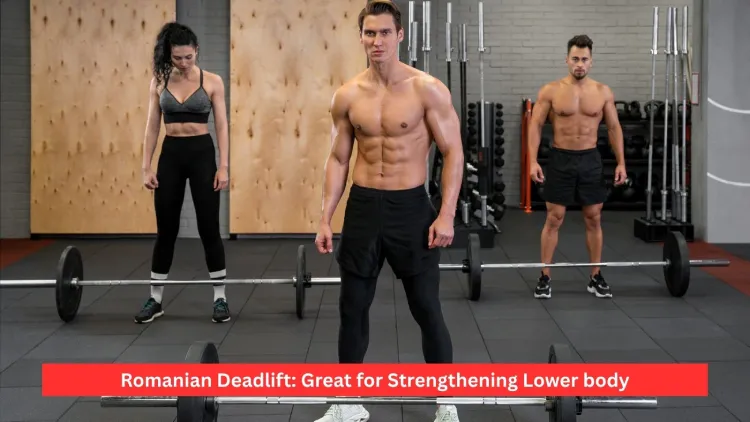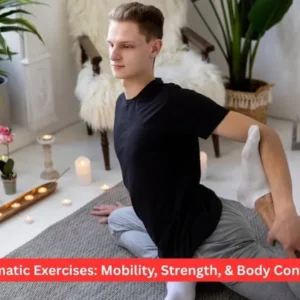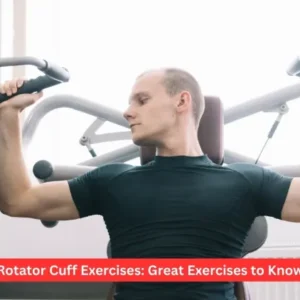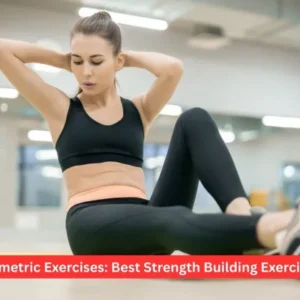Romanian Deadlift is such a powerful exercise that works on your hamstrings, your glutes and your lower back, which is a strength exercise of the lower body. It is known to develop muscle, better posture and produce athletic results; this is because it is a hip-hinge movement pattern. It is one of those that any serious person would love to do to achieve strong hamstrings, tight glutes and efficient movements.
- What does the Romanian Deadlift mean?
- How to do a Romanian Deadlift (RDL) Perfectly.
- Muscles worked in the Romanian Deadlift
- Advantages of the Romanian Deadlift
- Romanian Deadlift vs Conventional Deadlift
- Glute Growth Romanian Deadlift
- Romanian Deadlift Training Tips & Safety
- Conclusion
- Frequently Asked Questions
What does the Romanian Deadlift mean?
Romanian Deadlift is a strength exercise involving a barbell or dumbbell and concentrates on the hip hinge, which is the underlying movement of exercises like squats and deadlifts and therefore, contributes to their power. The Romanian Deadlift puts more emphasis on the hamstrings and the glutes, in contrast to the traditional deadlift exercise that uses more of the quads.
The exercise is very functional, and the various muscle groups involved are:
- Hamstrings
- Gluteus maximus
- Lower back muscles
- Core
- Forearms and grip
Guiding attention by emphasising the posterior muscle to support the posture and movement, the Romanian Deadlift provides power and functionality that can be transferred to any sphere, including sprinting and jumping, as well as the possibility to raise heavy weights and do it without any injuries.
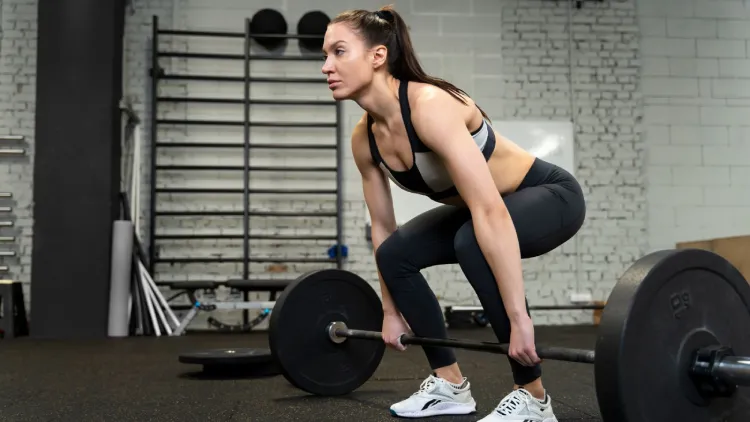
How to do a Romanian Deadlift (RDL) Perfectly.
The Romanian Deadlift requires proper form that will result in maximum effectiveness and minimise the chances of injury. Here’s the step-by-step guide:
Set Up:
- Strauss erectly, with feet spread shoulder-wide.
- Get a barbell or dumbbells in front of your thighs and hold them by an overhand grip.
- Make your chest high, waist straight and your back firm.
Hinge & Lower:
- Movement should start with the retrospinal rotation of the hips.
- Bend your knees down a little, but do not move them.
- Make the bar or dumbbells slide down your legs, and your torso is leaning forward.
- Hold the weight near the body and pay attention to feel the tension in the hamstrings.
Lift & Squeeze:
- And, when you are halfway down, or just under the knees, you then drive your hips forward.
- On returning to the standing position, squeeze your buttocks.
- Do not lean forward at the top, normal — stand straight to the full length with hips in a straight line.
Repeats
- Use 8-12 controlled repetitions of 34 sets about your aim (strength or hypertrophy).
- The trick to having the Romanian Deadlift is in keeping the movement under control. Do not lose the weight too fast. It is the strain which you develop on the descent which makes muscle grow and functional strength develop.

Muscles worked in the Romanian Deadlift
Romanian Deadlift is an exercise that is the most effective in building hamstrings, yet also trains some other muscles:
- Hamstrings – It is the major muscles which are engaged during the lowering stage.
- Glutes – these muscles extend the hips during the uphill, such as motion.
- Lower Back(Erector Spinae)– Helps to stabilise the spine and reinforce the body in a sitting position.
- Mainstream – Avoid spinal rounding contracts.
- Forearms and grip – Tighten since they are gripping the weight.
Romanian Deadlift is especially useful with individuals who are aiming to correct weak or underdeveloped hamstrings and glutes, which in most instances is prevalent in those who engage in much sitting or quad-dominant exercises.
Advantages of the Romanian Deadlift
The Romanian Deadlift can be recommended in terms of its benefits since it is effective in preventing injury and becoming stronger and more flexible:
- Improved Hamstring Strength and Flexibility: RDL training was shown to stretch and strengthen hamstring muscles, which makes it a good choice for everyone who trains in the gym or on a field.
- Glute Growth and Strength: This involves the use of the buttocks as the main movers that contribute to the strength and size of the buttocks.
- Postural Positioning: The strengthening of the postural chain allows for support and stabilisation of the spine and pelvis position.
- Functional Strength: It is a mimic movement pattern in everyday life and athletics, which means that it is very relevant to real life.
- A Deadlift Alternative that is healthier: The Romanian Deadlift is also considered an alternative to deadlifts due to its less extensive range of movement and load borne on the spine, thus making this exercise healthier than the original one in their case.
- Aids in Other Workouts: Increases your ability to lift such exercises as squat, bench press, running and jumping motions.
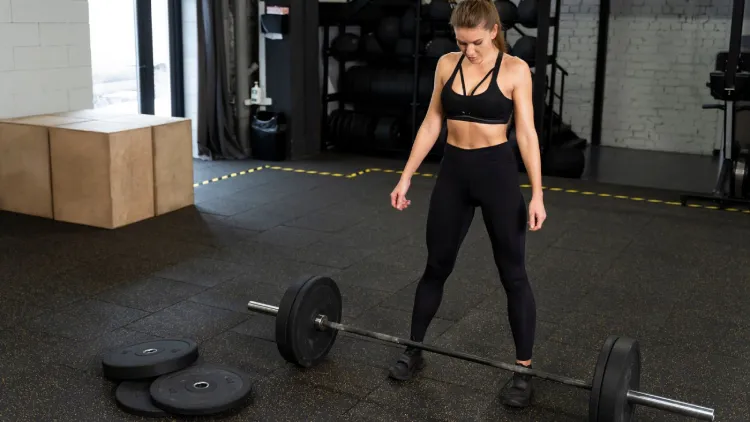
Romanian Deadlift vs Conventional Deadlift
Although these two seem to be the same, the Romanian Deadlift and the traditional deadlift differ significantly:
- Starting Position: Romanian Deadlifts start with the standing position, unlike the deadlifts that begin on the floor.
- Muscle Concentration: RDLs centre on hamstrings and glutes, whereas deadlifts target more muscles on the whole, such as quads and traps.
- Limitations of Motion: RDLs have a limited range of movements that is narrow yet controlled.
- Training Purpose RDLs tend to be utilised more for hypertrophy (muscle building) and mobility; deadlifts for total body strength.
In the case of many lifters, the combination of the two variants in a program guarantees equal progress. Yet, when you want to train the hamstrings and glutes, the Romanian Deadlift is the best option.
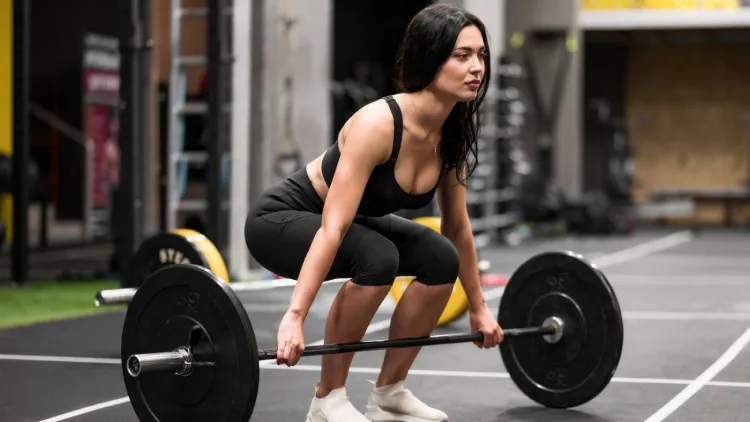
Glute Growth Romanian Deadlift
Romanian Deadlift is one of the exercises that are effective in the pursuit of the glute muscles. The RDL can be used to enlarge and improve the size and strength of the gluteus maximus because the hip hinge motion with glute activation at the apex of every repetition enhances the development of the gluteal muscle.
To stabilise glute involvement in the Romanian Deadlift:
- Drive through your heels.
- As far as you can, roll your hips backwards.
- Squeeze your buttocks up at the top.
- Continuously control reps to augment time under tension.
Exercises such as glute bridges or step-ups can be used together with RDLs so that the leg training is balanced, i.e. so that the glutes grow.
Romanian Deadlift Training Tips & Safety
- Don’t Overload Too Soon: Master the hip hinge with lighter weights.
- Avoid Rounding Your Back: Always maintain a neutral spine during the lift.
- Use Straps if Needed: If your grip limits your performance, add lifting straps for better control.
- Practice Foot Stability: Flat shoes or barefoot lifting allow better stability and balance.
- Control the Tempo: Slow, controlled reps yield better results than fast, jerky movements.
The Romanian Deadlift is safer than a traditional deadlift for many people, primarily because it reduces the load placed on the lower back while isolating the target muscles more effectively.
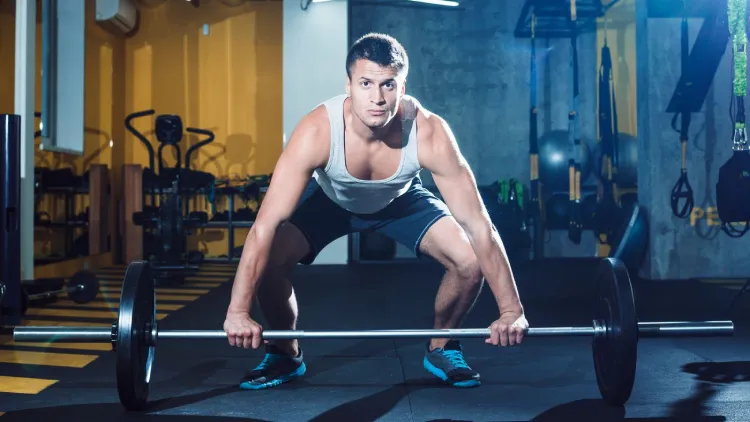
Conclusion
The Romanian Deadlift is a versatile, powerful exercise that every fitness enthusiast should consider adding to their routine. Whether you’re looking to strengthen your hamstrings, grow your glutes, improve posture, or build functional strength, this movement checks all the boxes. With its emphasis on controlled motion and proper technique, the Romanian Deadlift is safer on the lower back compared to the traditional deadlift, making it perfect for both beginners and advanced lifters. Add it to your weekly training and experience the benefits of a stronger and more balanced posterior chain.
Frequently Asked Questions
Is the Romanian Deadlift better for hamstrings than regular deadlifts?
Yes, the Romanian Deadlift places greater emphasis on the hamstrings due to its hip hinge movement and controlled lowering phase, making it one of the best exercises for targeting hamstring strength and flexibility.
Can the Romanian Deadlift help grow the glutes?
Absolutely. The Romanian Deadlift directly activates the glute muscles, especially during hip extension. Pairing RDLs with a glute-focused workout plan can significantly improve muscle size and strength in the glute region.
How much weight should I start with for Romanian Deadlifts?
Start with a light weight that allows you to maintain perfect form — even a barbell without weights or light dumbbells are ideal for beginners. Once the movement feels smooth and controlled, you can progressively increase the load.
How many sets and reps should I do for the best results?
A common structure is 3–4 sets of 8–12 reps, depending on your goals. For muscle growth (hypertrophy), stay within this rep range, focusing on slow, controlled reps and proper tension throughout the movement.
